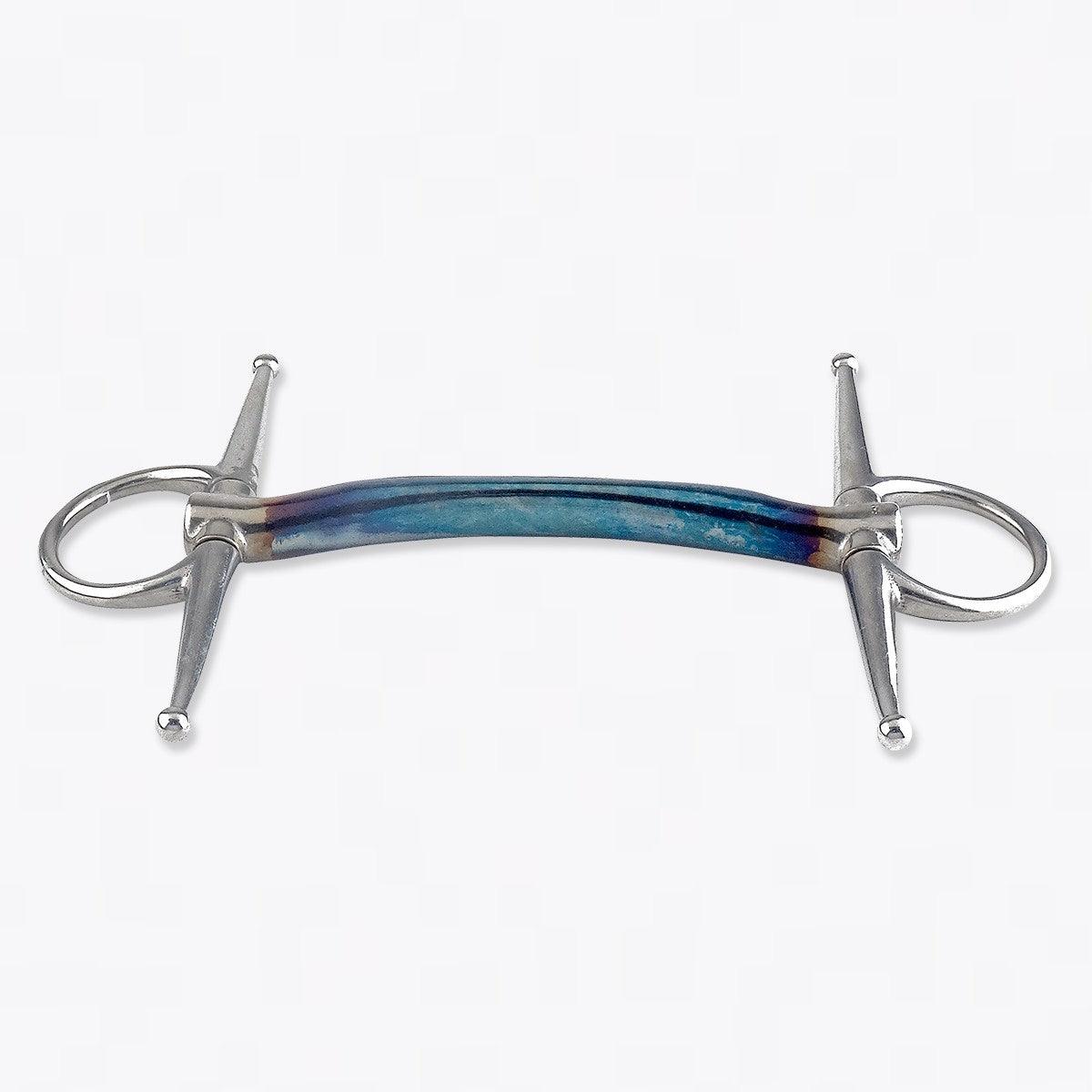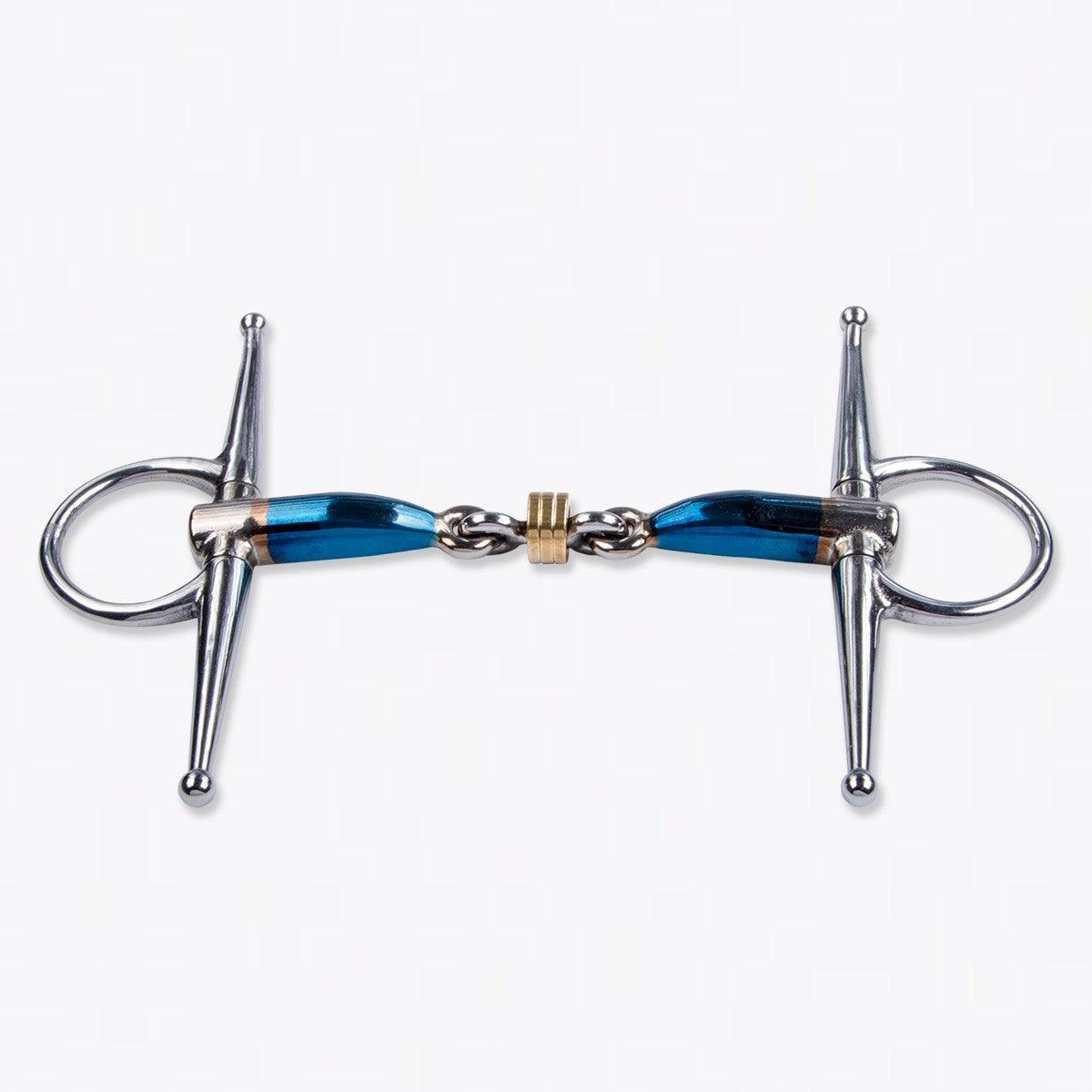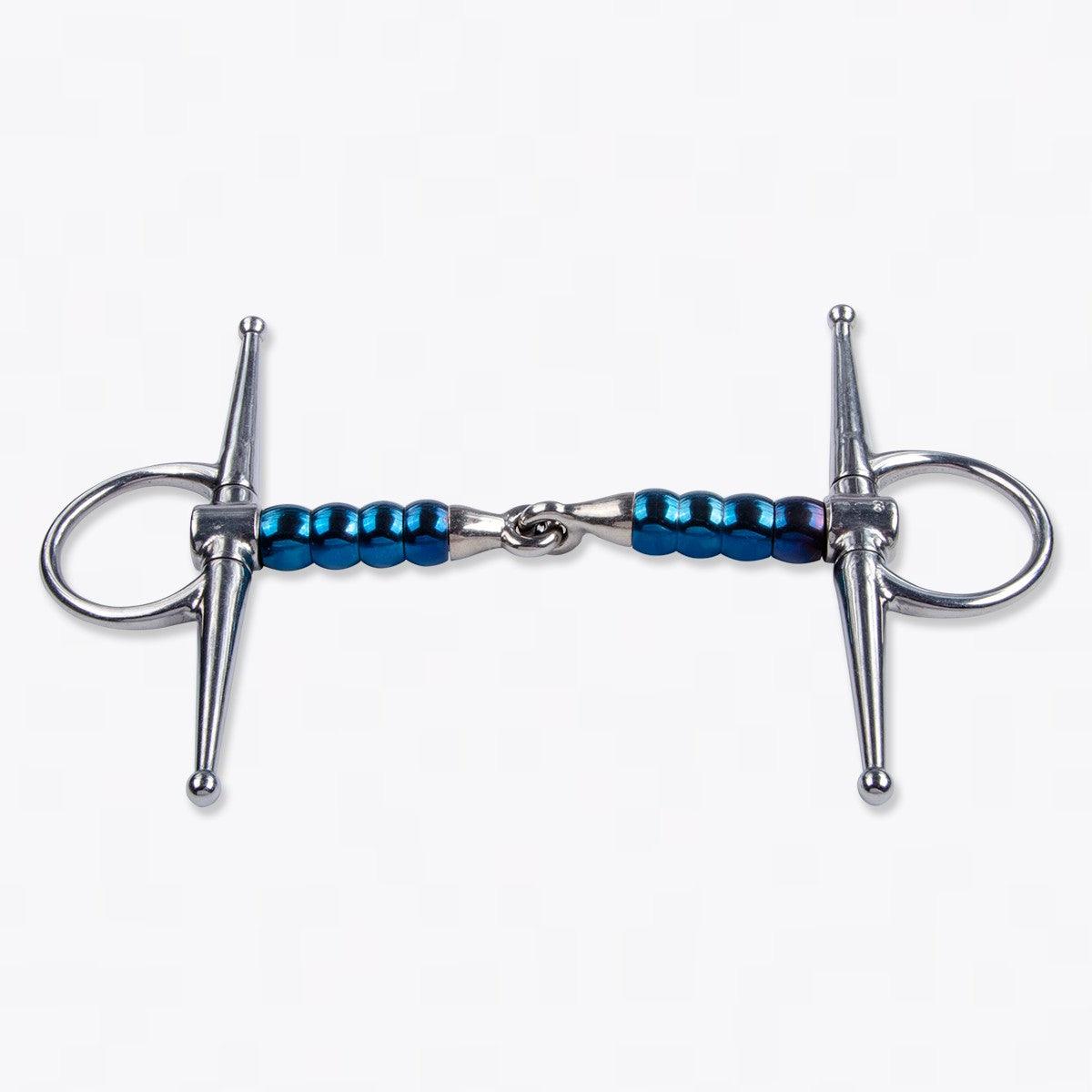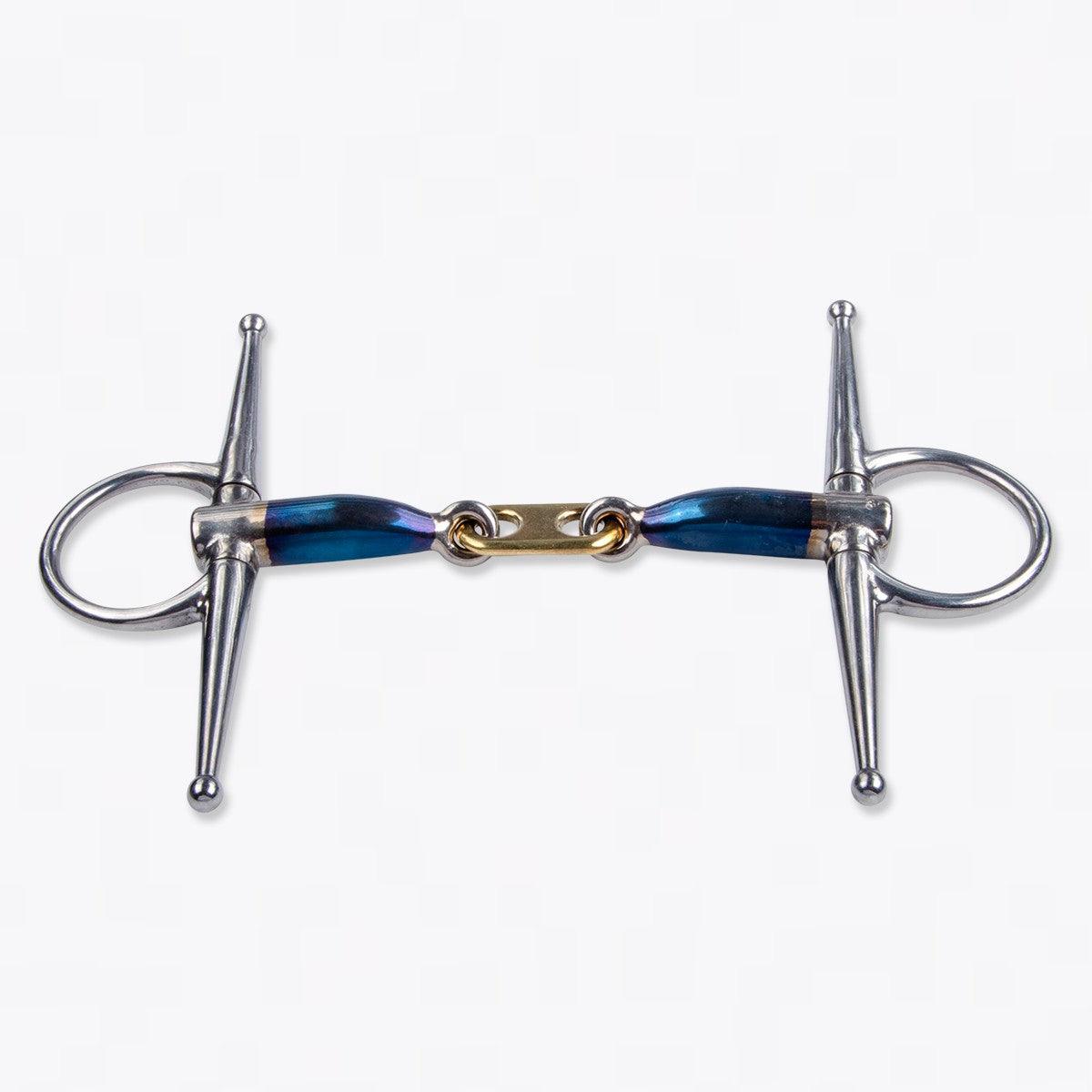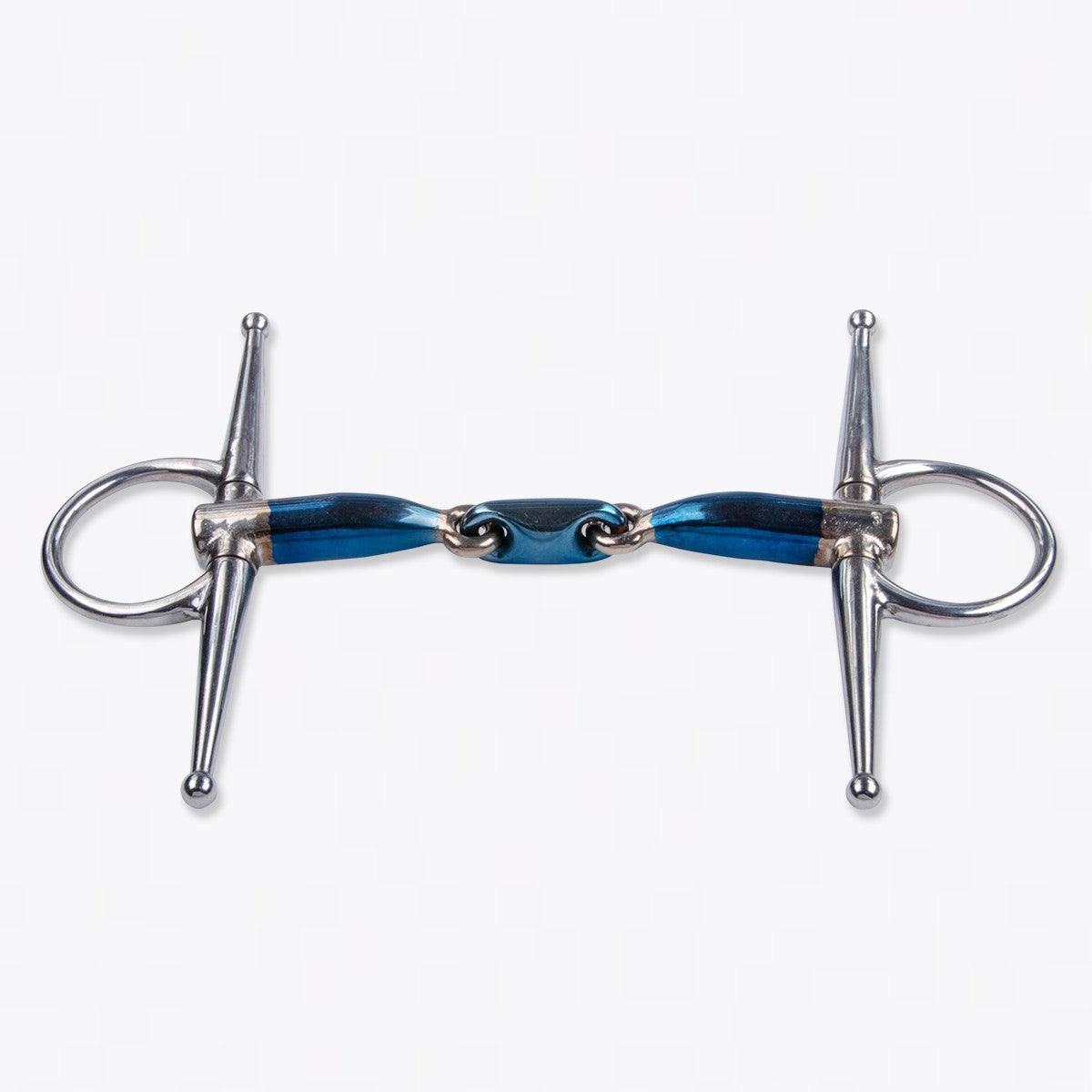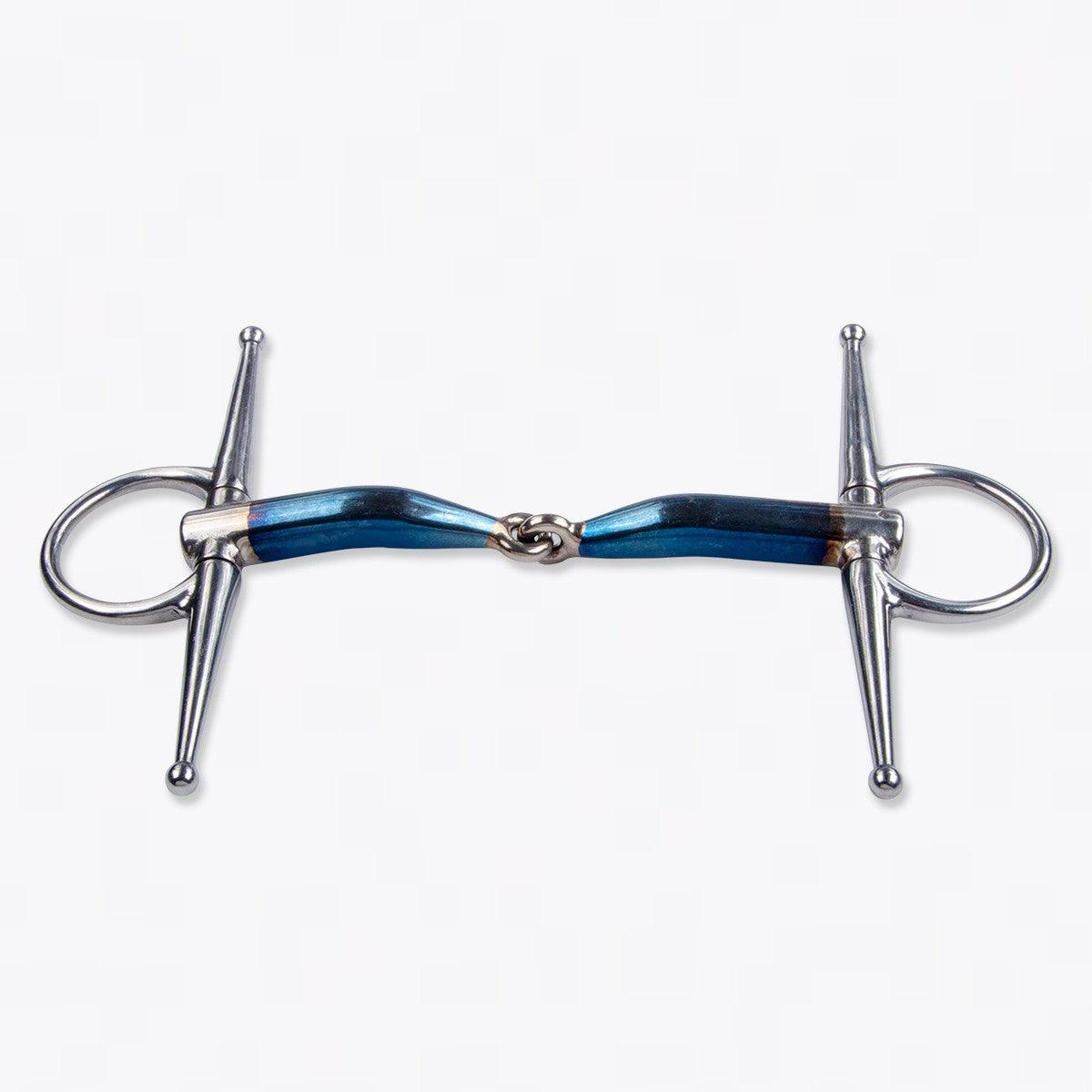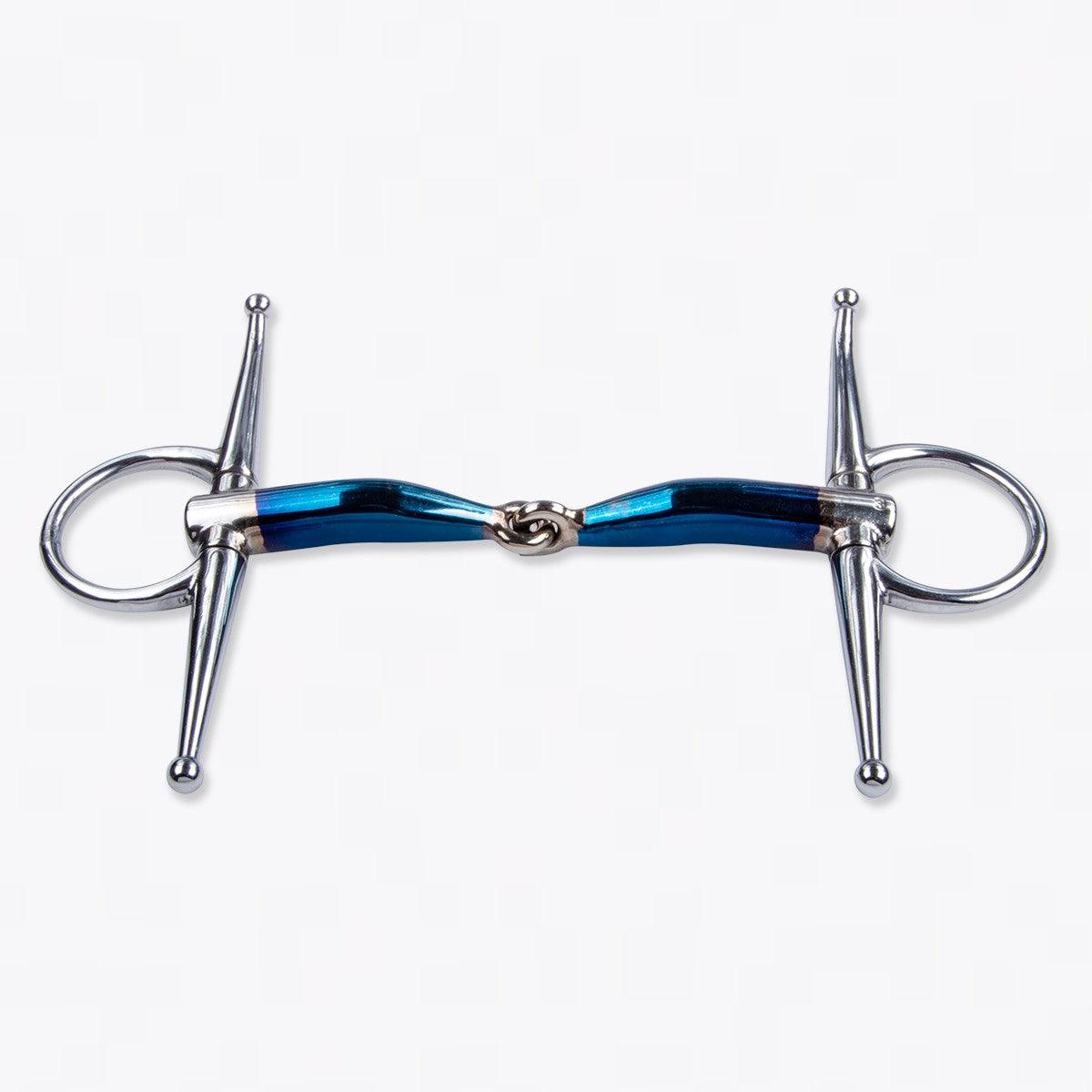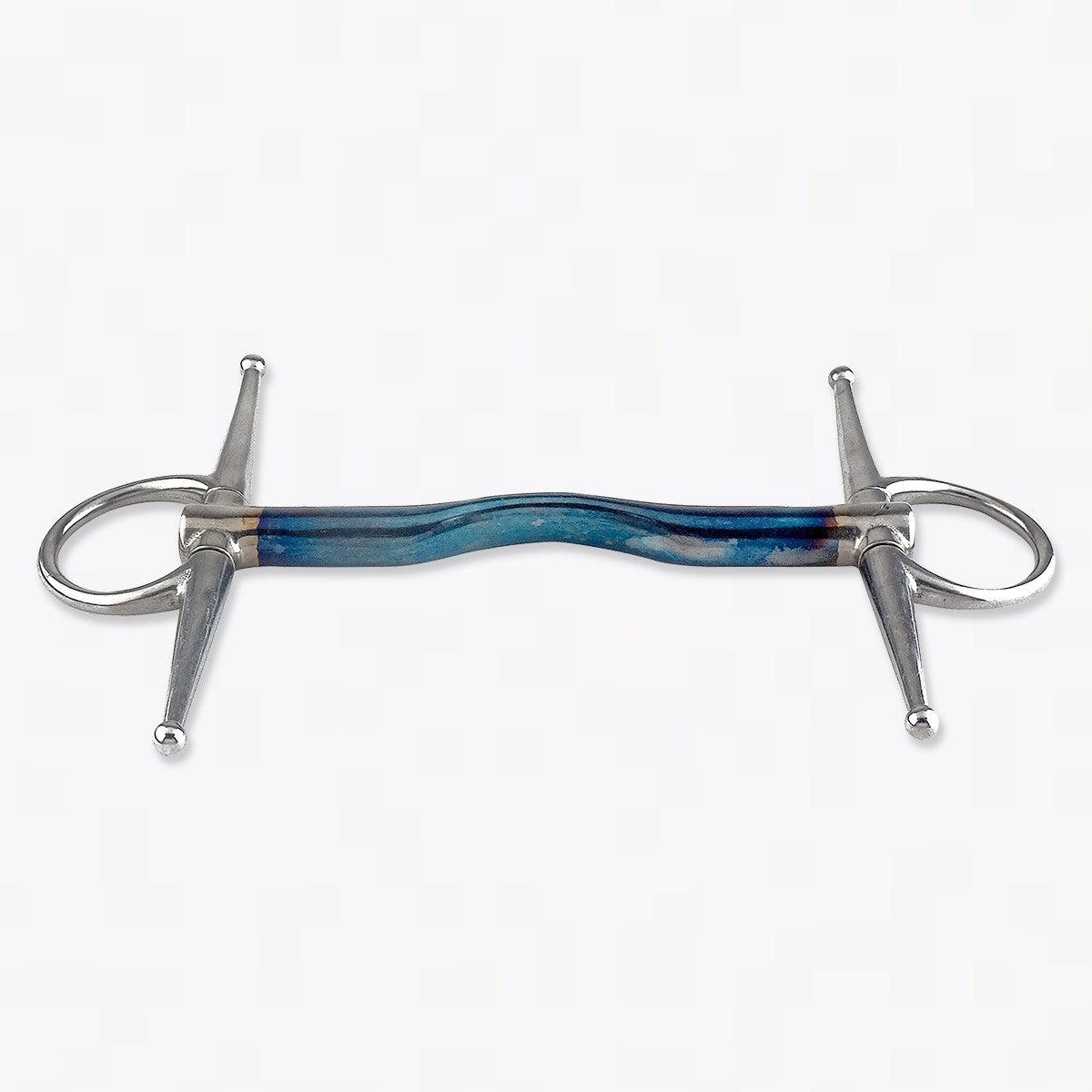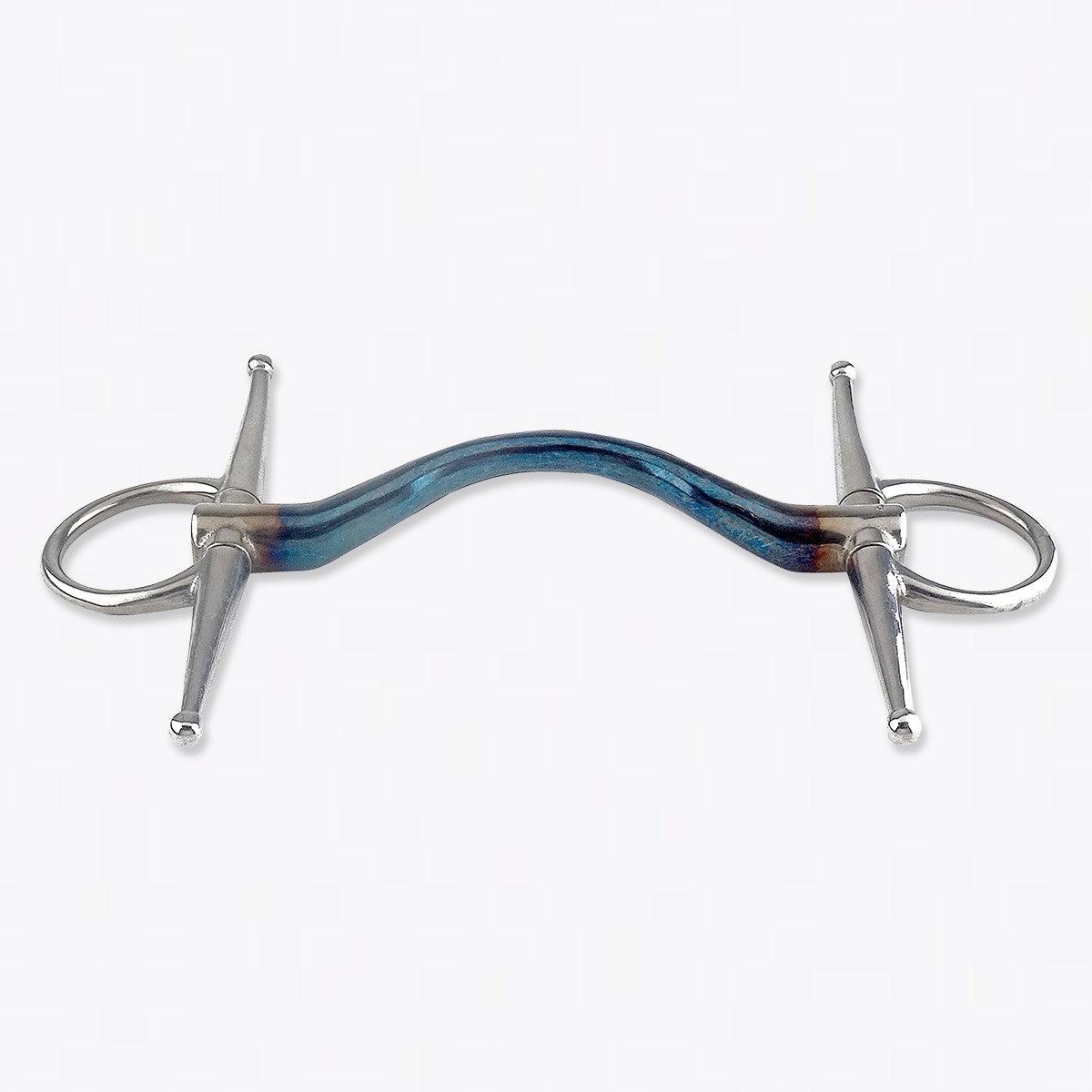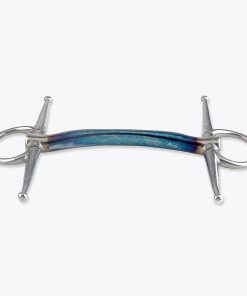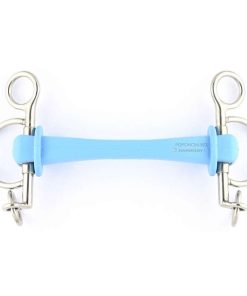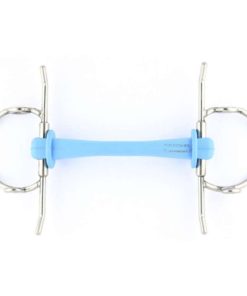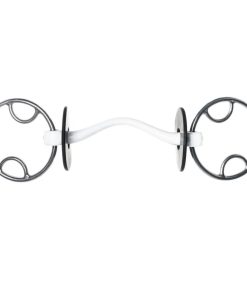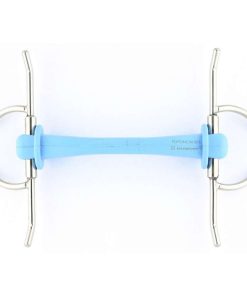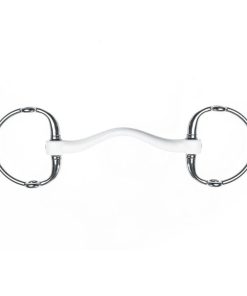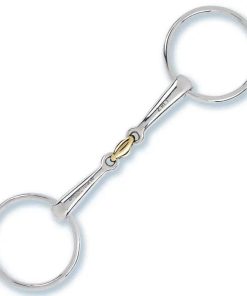Trust sweet iron full cheek bit Trust
$ 119,99 $ 48,00
Sweet iron will rust when it comes into contact with (air) humidity; the surface rust tastes sweet and naturally stimulates the saliva production. This will cause the horse to salivate more which in turn encourages better acceptance of the bit. The rusting process (oxidation) changes the blue colour of the TRUST-bit to a brownish-grey.
If a sweet iron bit is not used for a while, an orange-brown rust layer may develop on the mouthpiece. Simply remove this by wiping the bit with a damp cloth.
A full cheek bit is a bit of which the bit rings are extended with two small bars at the transition bit ring – mouthpiece. The sides make sure that a horse is easier to turn and that the rider can’t pull the bit through the horse’s mouth. This makes the full cheek bit useful for training young horses.
The full cheek bit lies stable and calm in the mouth.
In order to make an even more effective full cheek, two straps or loops can be placed on either side of the bit and attached to the bridle. The upper ends of the sides of the full cheek fit right into these straps. These straps ensure that the sides do not get stuck under the noseband of the horse. They give a little more leverage effect, obtained by the straps, than when they are not being used.
Features single jointed mouthpiece:
Because of the single jointed mouthpiece, the tongue will be more free than with a double jointed mouthpiece or straight bit. A single broken mouthpiece works mainly on the layers and the sides of the tongue.
Features double jointed mouthpiece:
The double-jointed mouthpiece consists of three parts. The middle section of the mouthpiece is flat on the tongue and give more pressure on the tongue than a single broken mouthpiece. The thicker the middle the more pressure on the tongue.
Features straight / unjointed mouthpiece:
A unjointed bit/straight bit often works sharper than a single or double jointed mouthpiece. The shape of the mouthpiece determines the pressure in the mouth. A straight mouth piece with tongue port gives more pressure on the layers and keeps the tongue free. The straighter and thicker the mouthpiece, the more pressure on the tongue.
Desciption loops for full cheek bit:
If you want to use a full cheek snaffle you can attach a small strap on both sides of the bridle. Those straps have loops on each side. The first loop goes around the cheek piece, the second loop moves over to the upper part of the full cheek.
This prevents the pins from getting stuck under the noseband. The straps also prevent the bit from tipping too far in the horse’s mouth.
Width in cm: 12.5 / 13.5 / 14.5 cm
Width in inch: 5” / 5 1/4″ / 5 3/4″
| Size | 11.5 cm – 4 1/2", 12.5 cm – 5", 13.5 cm – 5 1/4", 14.5 cm – 5 3/4" |
|---|---|
| MOUTHPIECE | Locked, Jointed, Low Port, Medium Port, Brass Rings, Cherry Roller, Waterford, French Link, Dr. Bristol, Eliptical |
Quick Shipping and Professional Packaging
We provide a variety of shipping options due to our long-running partnerships with UPS, FedEx and DHL. Our warehouse staff will package all goods to our exacting requirements. Your goods are thoroughly checked and secured properly prior to shipping. We ship to thousands clients each day across multiple countries. This shows that we're committed to being the largest online retailer in the world. Both Europe and the USA have distribution and warehouse centres.
Note: Orders that include more than one item will be assigned a processing date depending on the item.
Prior to shipment, we will inspect thoroughly the items you've purchased. The majority of orders are shipped within 48 hours. The expected delivery time will be between 3-7 days.
Returns
We don't control the inventory in our factory and warehouse. This means that the actual stock could change at any time. Be aware that your order may be out of stock when the order has been placed.
Our policy is valid for 30 days. If you have passed 30 days in the past since you purchased and we are unable to offer you a refund or exchange.
The item cannot be used and in its original condition. It must also still be in the original package.
